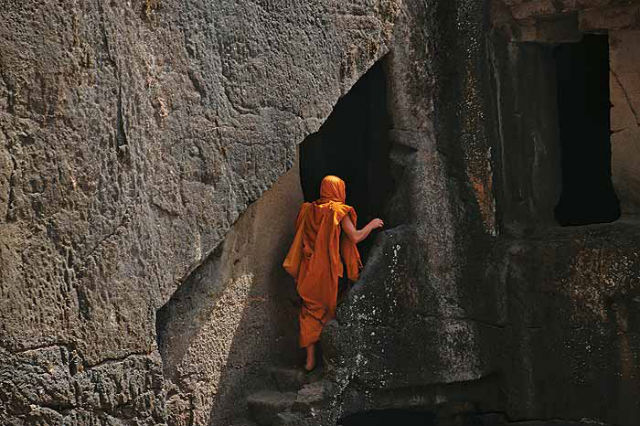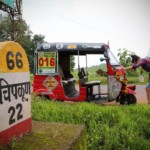
Intricately carved into the hillside in the middle of the Indian countryside in northern Maharastra, the Ajanta and Ellora Caves are some of India’s greatest architectural wonders and a must see for anyone traveling the area around Mumbai.
They have both been listed as UNESCO World Heritage Sites, and quite rightly so, especially when the caves at Ellora date back to 6th and 11th centuries AD, and the Ajanta caves even more so, having been constructed between the 2nd century BC and 6th century AD.
The caves are vast, and merit an entire day’s visit, which is why our Deccan Odyssey run on the Rickshaw Challenge, which is currently taking place, spends a rest day in Aurangabad.
If you’re going to take a break from tooting your rickshaw, you might as well see something spectacular – and these caves won’t disappoint.
Ancient Ajanta
Ajanta is the older cave system, with the current caves dating as far back as the 2nd century BC. There are 29 caves cut into the volcanic rock found around the Deccan Plateau.
These caves are known for their carvings and sculptures depicting the life of Buddha. The artwork found in these ancient caves are said to mark the birth of classical Indian art.
But despite the artistic wonders of these caves, which once functioned as a monastic complex, they were abandoned in the 7th century AD due to Ellora’s increasing popularity.
The caves faded out of memory, until a British tiger-hunting party “rediscovered” Ajanta in the early 19th century. Now the caves house some of the best examples of Buddhist art.
It’s not just the art that make these caves worth the visit, but the horse-shoe bend of rock rising over 75m in height above the Waghora stream provides a spectacular sight.
Multi-religious Ellora
The Ellora Caves were all about tolerance and inclusiveness. With Buddhist, Hindu and Jain sanctuaries, people could practice the three religions side-by-side, which makes these caves a unique place in the Indian sub-continent.
There are over 600 monuments on the site, spread between 34 rock-cut monasteries and temples set into the walls of the high basalt cliff.
Like Ajanta, the caves are a masterpiece in themselves, both in architecture and artistic calibre, but they also illustrate a tolerant spirit that was characteristic in ancient India.
Out of the 34 structures, 12 were Buddhist, 17 Hindu and 5 Jain, all of which were vertically excavated out of stone. These caves are also rich in art and habitation space along side their temples.
Getting there
The best way to visit is to join us on the Rickshaw Challenge for the Deccan Odyssey, but if you can’t wait till next year, or if you want to make a detour after taking part in our other runs, you can always do it yourself.
You can fly into Aurangabad, which is located about 15km from the caves. If you want the true Indian experience that is not on a rickshaw, then you can always take the train.
There are regular trains running from Mumbai, Hyderabad, Delhi and so on, so it’s not hard to make it to Aurangabad. Also, there are regular bus services to the caves from the city, so it’s easy to do.





